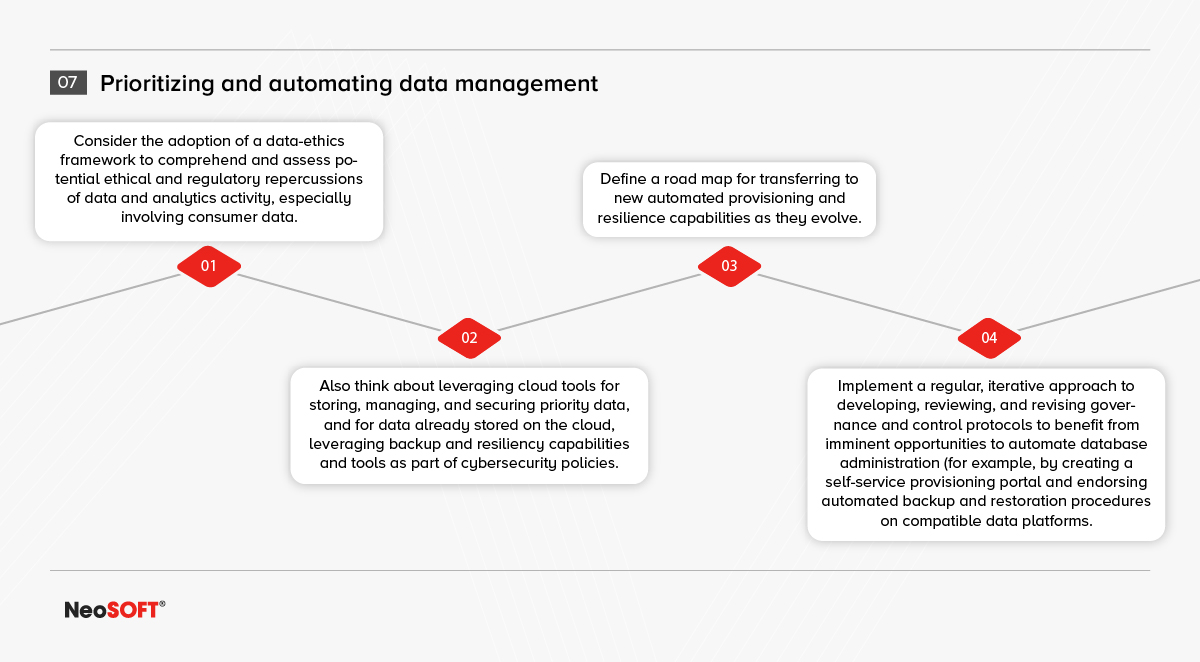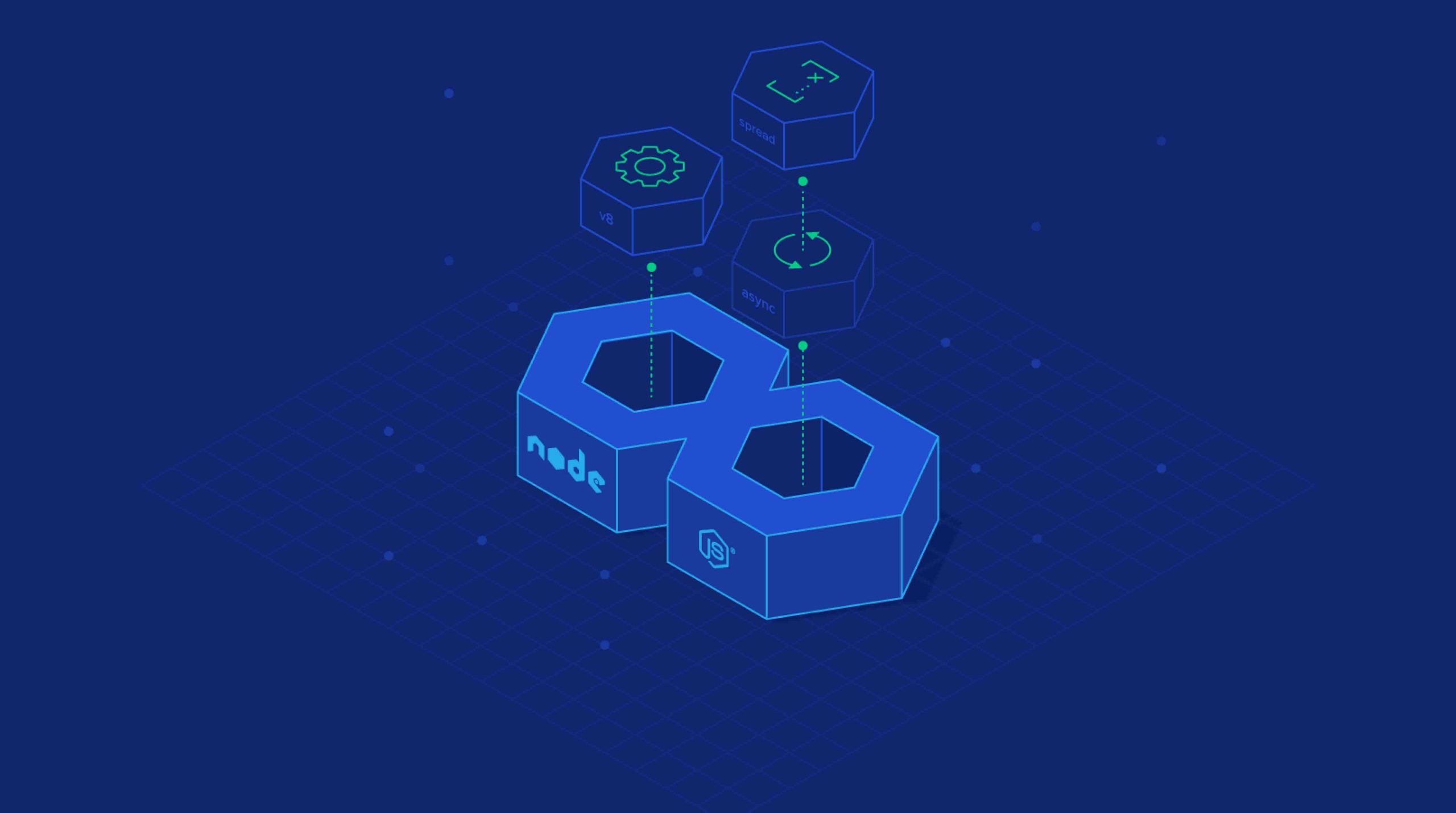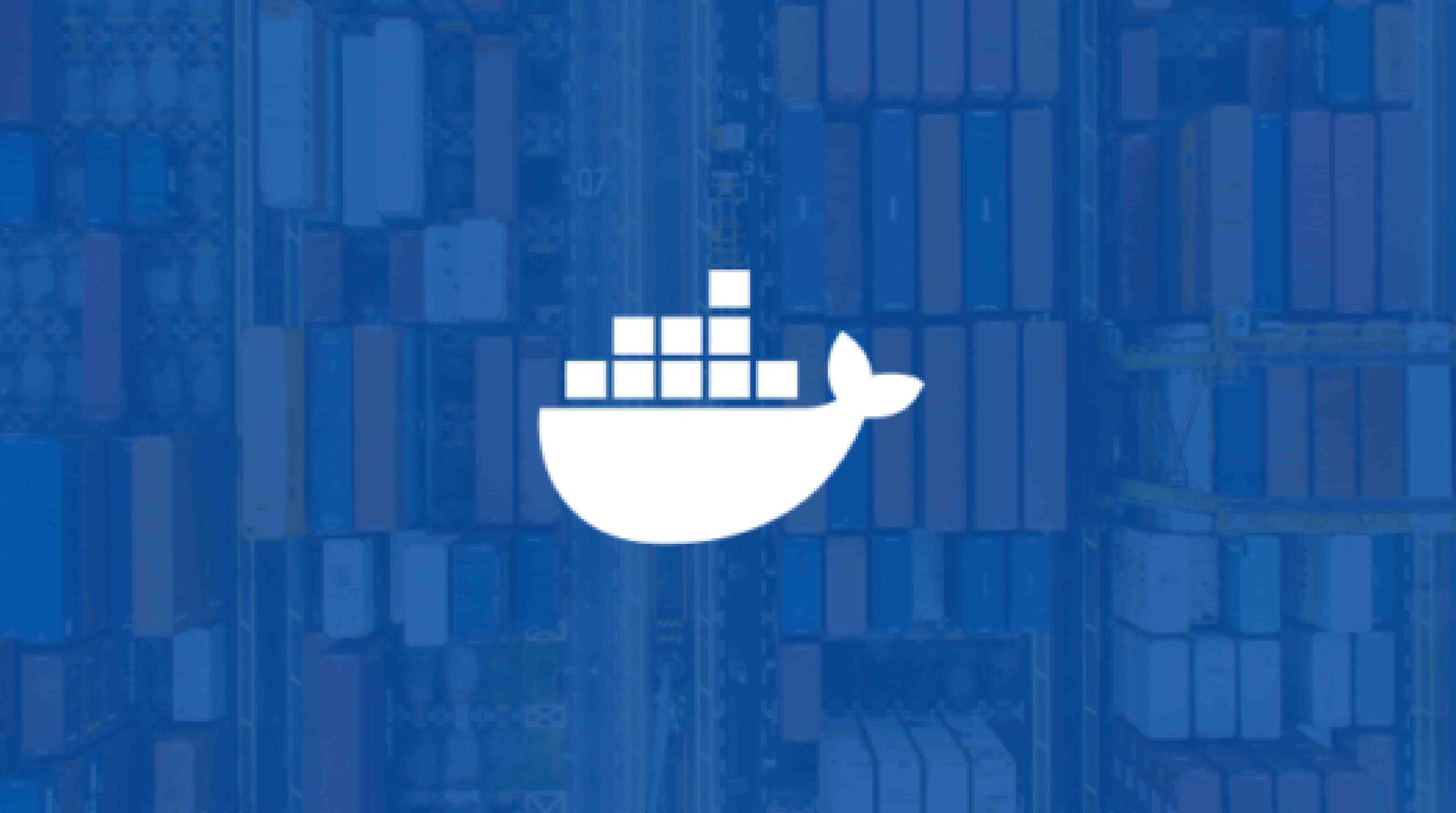Getting Future-Ready.
The Data-Driven Enterprises Of 2025
August 2, 2022
If you can measure it, you can improve it. This aptly applies to businesses that are riding the data revolution. The massive strides in technology evolution, the value of data, and surging data literacy rates are altering the meaning of being “data-driven”. To become truly data-driven, enterprises should link their data strategy to clear business outcomes. They should enable data as a strategic asset and identify opportunities for a higher ROI. Last but not the least, the key data officers in the organization must be committed to building a holistic and strategic data-driven culture.
The new data-driven enterprises of 2025 will be defined by seven key characteristics and companies who are agile and speed up to make their progress fast, are the ones who shall derive the highest value from data-supported capabilities.
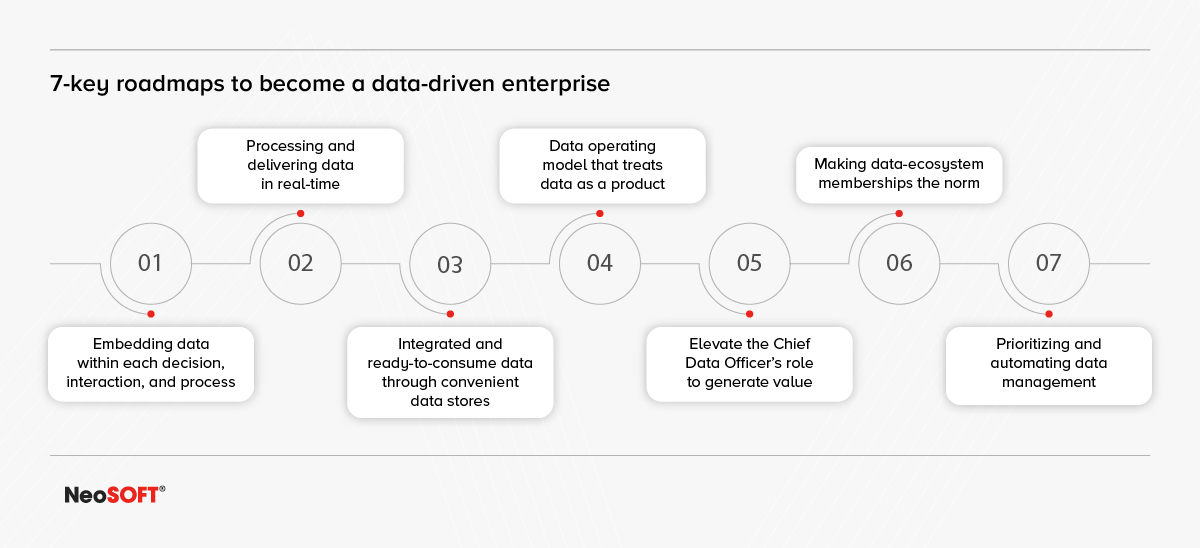
1. Embedding data within each decision, interaction, and process
Quite often, companies leverage data-powered approaches periodically throughout their organization. This includes various aspects from predictive systems to AI-powered automation. However, these are sporadic and inconsistencies have led to value being left on the table and creating inefficiencies. Data needs to be democratized and made simple and convenient to be accessed by everyone. Several business problems are still being addressed with traditional approaches and can take months or even years to resolve.
Scenario by 2025
Almost all employees shall regularly leverage data to drive their daily tasks. Instead of resorting to solving problems by developing complex long-term roadmaps, they can simply leverage innovative data techniques that can solve their issues within hours, days, or weeks.
Companies will be able to make better decisions as well through the automation of everyday activities and recurring decisions. Employees will be free to turn their efforts to more ‘human’ domains like innovation, collaboration, and communication. The data-powered culture facilitates continuous performance improvements to develop distinctly different customer and employee experiences, as well as the rise of complex new applications that aren’t available for widespread use currently.
Use Cases
⦁ Retail stores offer an enhanced shopping experience through real-time analytics to identify and nudge customers that are a part of the loyalty program, towards products that might interest them or be useful to them, and streamline or entirely automate the checkout process.
⦁ Telecommunication companies use autonomous networks that automatically determine areas that require maintenance and identify opportunities for increasing the network capabilities based on usage.
⦁ Procurement managers frequently use data-powered processes to instantly sort purchases for approval in terms of priority, enabling them to shift their efforts to develop a better and more potent partner strategy.
Key Enablers
⦁ A clear vision and data strategy to outline and prioritize transformational use cases for data.
⦁ Technology enablers for complex AI use cases to support querying of unstructured data.
⦁ Organization-wide data literacy and data-powered culture, allow all employees to understand and embrace the value of data.
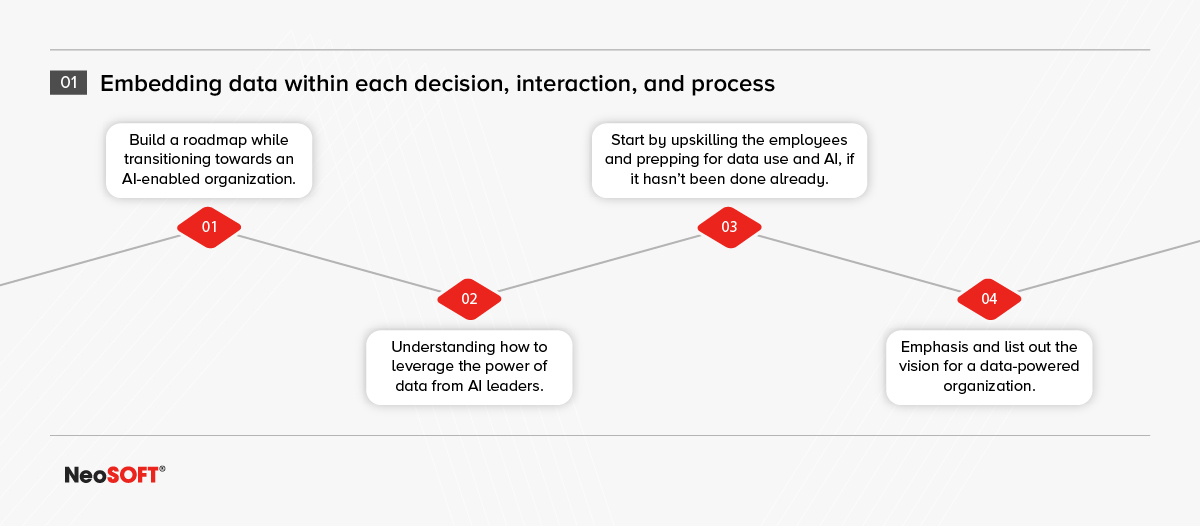
2. Processing and delivering data in real-time
Just a fraction of data collected from connected devices is captured, processed, queried, and analyzed in real-time due to limitations within legacy technology structures, the barriers to adopting more modern architectural elements, and the high computing demands of comprehensive, real-time processing tasks. Companies usually have to choose between pace and computational intensity, which can delay more sophisticated analysis and hinder the implementation of real-time use cases.
Scenario by 2025
Massive networks of connected devices shall collect and transmit data and insights, usually in real-time. How data is created, processed, analyzed, and visualized for end-users will be greatly transformed through newer and more ubiquitous technological innovations, leading to quicker and more actionable insights. The most complex and advanced analytics will be readily available for use to all organizations as the expenses related to cloud computing will continue to decline and highly powerful “ in-memory” data tools emerge online. Altogether, this will lead to more advanced use cases for delivering insights to customers, employees, and business partners.
Use Cases
⦁ A manufacturing unit makes use of networks of connected sensors to predict and determine maintenance requirements in real-time.
⦁ Product developers leverage unstructured data and deploy unsupervised machine-learning algorithms on web data to detect deeply embedded patterns and leverage internet-protocol data and website behavior to customize web experiences for individual customers in real-time.
⦁ Financial analysts leverage alternative visualization tools, potentially turning to augmented reality/ virtual reality (AR/VR) to create visual representations of analytics for strategic decision-making involving multiple variables instead of being restricted to the usual two-dimensional dashboards currently being used.
Key Enablers
⦁ Complete business architecture to comprehend the implementation between assets, processes, insights, and interventions as well as to enable the detection of real-time opportunities.
⦁ Highly effective edge-computing devices (eg: IoT sensors), ensuring that even the most basic devices create and analyze usable data “at the source”
⦁ 5G connectivity infrastructure supporting high-bandwidth and low-latency data from connected devices. Optimizing intensive analytics jobs using in-memory computing for quicker and more effective computations.
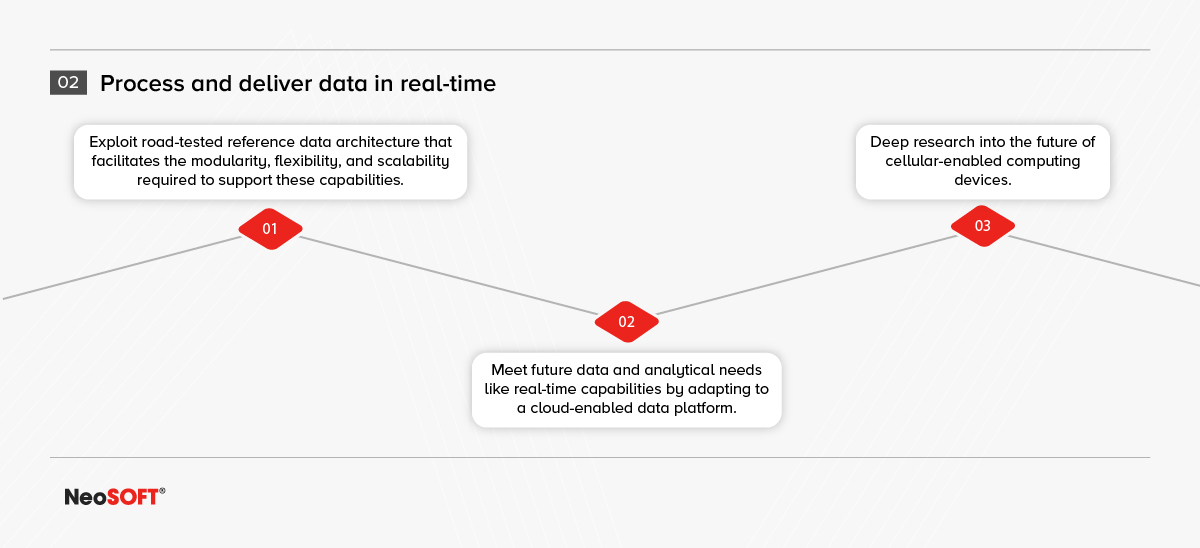
3. Integrated and ready-to-consume data through convenient data stores
Even though the rapid increase and expansion of data are powered by unstructured or semistructured data, a big chunk of usable data is still structured and organized using relational database tools. Quite often, data engineers spend a substantial amount of time manually exploring data sets, establishing relationships between them, and stitching them together. They must also regularly refine data from its natural, unstructured state into a structured format using manual and bespoke processes that are time-consuming, not scalable, and error-prone.
Scenario by 2025
Data practitioners will work with a wide variety of database types, including time-series databases, graph databases, and NoSQL databases, facilitating the creation of more flexible pathways for organizing data. This will enable teams to easily and quickly query and understand relationships between unstructured and semi structured data. Further accelerating the development of new AI-powered capabilities as well as the detection of new relationships within data to fuel innovation. Merging these flexible data stores with advancements in real-time technology and architecture also empowers organizations to create data products like ‘customer 360’ data platforms and digital twins – featuring real-time data models of physical entities (for example, as a manufacturing facility, supply, or even the human body). This facilitates the creation of complex simulations and what-if scenarios using the power of machine learning or more sophisticated techniques like reinforcement learning.
Use Cases
⦁ Banking and large enterprises use visual analytics to infer data conclusions that are modeled from multiple sources of customer data.
⦁ Logistics and transportation companies leverage real-time location data and sensors installed within vehicles and transportation networks to develop digital twins of supply chains or transportation networks, providing a variety of potential use cases.
⦁ Construction teams crawl and query unstructured data from sensors installed in buildings to glean insights that enable them to streamline design, production, and operations, for example, they can stimulate the financial and operational impact of selecting various types of materials for construction projects.
Key Enablers
⦁ Creating more flexible data stores through a modern data architecture.
⦁ The development of data models and digital twins to mimic real-world systems.
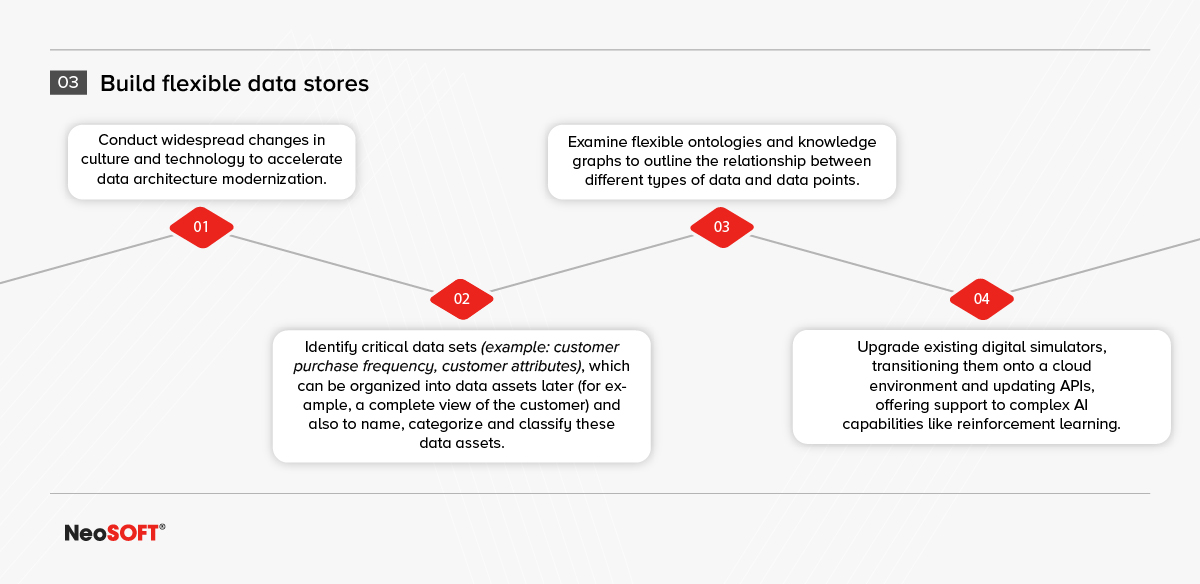
4. Data operating model that treats data as a product
The data function of an organization, if it exists beyond IT, manages data using a top-down approach, rules, and controls. Data frequently does not have a true ‘owner’, enabling it to be updated and prepped for use in multiple different ways. Data sets are also stored, often in duplication, across massive, siloed and often costly environments, making it difficult for users within an organization (like data scientists searching for data to develop analytics models) to detect, access, and implement the data they need rapidly.
Scenario by 2025
Data assets shall be categorized and supported as products, regardless of whether they are deployed by internal teams or for external customers. These data products will have devoted teams, or ‘squads’, working in tandem to embed data security, advance data engineering (for instance to transform data or continuously integrate new sources of data), and implement self-service access and analytics tools. Data products will continuously advance in an agile way to keep up with the demands of consumers, leveraging DataOps (DevOps for data), continuous integration, delivery processes, and tools. When combined, these products offer data solutions that are more easily and repeatedly useful to address various business challenges and decrease the time and costs associated with delivering new AI-powered capabilities.
Use Cases
⦁ Assigned teams within retail companies to develop data products, like ‘product 360’, and verify that the data assets continue to evolve and meet the requirements of critical use cases.
⦁ Healthcare companies, including payment and healthcare analytics firms, dedicated product teams to create, maintain and evolve ‘patient 360’ data products to improve health outcomes.
Key Enablers
⦁ A data strategy that singles out and prioritizes business cases for leveraging data.
⦁ Being aware of the organizations’ data sources and the types of data they possess.
⦁ An operating model that establishes a data-product owner and team, which can contain analytics professionals, data engineers, information-security specialists, and other roles when required.
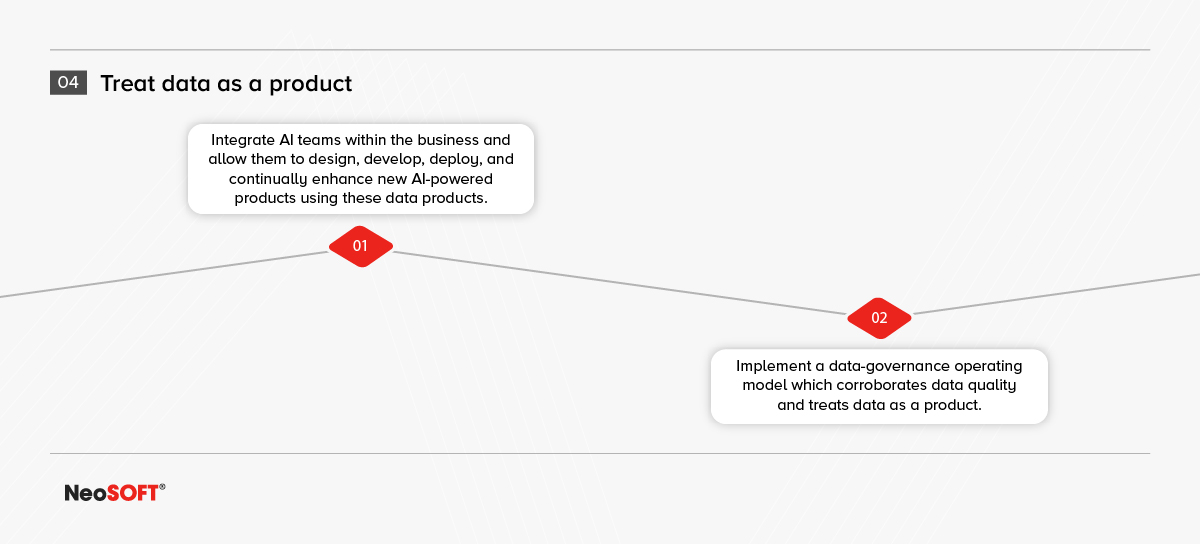
5. Elevate Chief Data Officer’s role to generate value
Chief data officers (CDOs) and their teams function as a cost center responsible for developing and monitoring compliance within policies, standards, and procedures to manage data better and ensure its quality.
Scenario by 2025
CDOs and their teams act as business units with their own set of defined profit-and-loss responsibilities. This entity, in collaboration with business teams, would be responsible for ideating new methods of leveraging data, creating a holistic enterprise data strategy (and including it as a part of the business strategy), and identifying new sources of revenue by monetizing data services and data sharing.
Use Cases
⦁ Healthcare CDOs collaborate with business units to develop new subscription-based services for patients, payers, and providers that can boost patient outcomes. These services can include creating custom treatment plans, more accurately flagging miscoded medical transactions, and improving drug safety.
⦁ Bank CDOs commercialize internal data-oriented services, like fraud monitoring and anti-money-laundering services, as a representative of government agencies and other partners.
⦁ Consumer-centric CDOs collaborate with the sales team to leverage data for boosting sales conversion and bear the responsibility for meeting target metrics.
Key Enablers
⦁ Data literacy between business unit leads and their teams to generate energy and urgency to engage with CDOs and their teams.
⦁ An economic model, like an automated profit-and-loss tracker, for verifying and attributing data and costs.
⦁ Expert data talent keen on innovation.
⦁ Adoption of venture capital style operating models that promote experimentation and innovation.
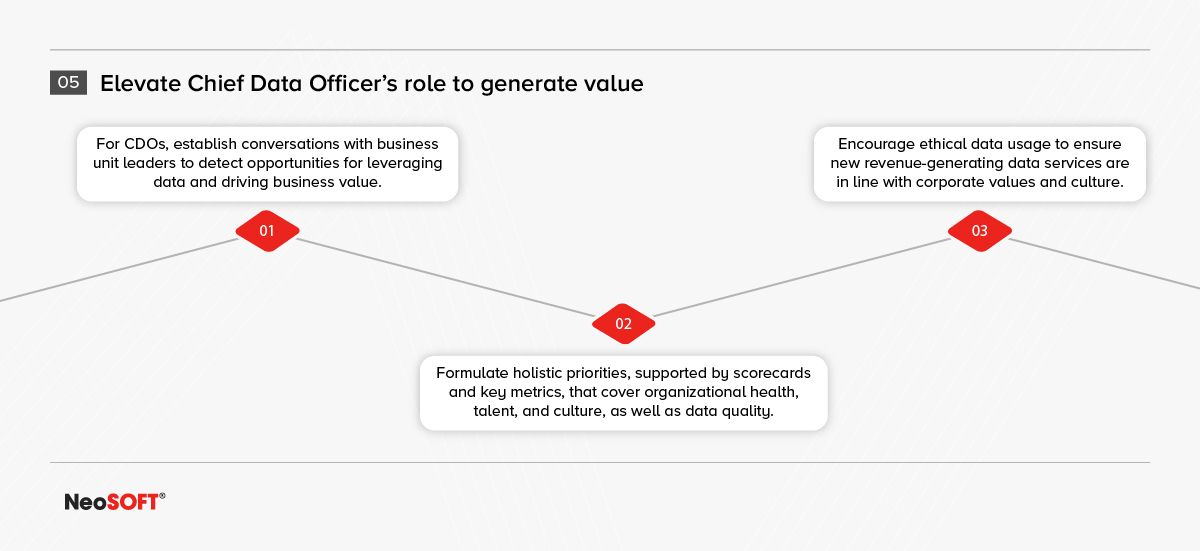
6. Making data-ecosystem memberships the norm
Even within organizations, data is frequently siloed. Although data-sharing agreements with external partners and competitors are growing, they are still quite uncommon and limited in scope.
Scenario by 2025
Big, complex organizations leverage data-sharing platforms to promote collaboration on data-driven projects, both within and amongst organizations. Data-powered companies take an active role in a data economy that enables the collection of data for identifying valuable insights for all members. Data marketplaces facilitate the sharing, exchange, and supplementation of data, allowing companies to develop truly unique and proprietary data products from which they can derive key insights. On the whole, limitations in the exchange and combination of data are massively decreased, bringing together different data sources in a way that ensures greater value creation.
Use Cases
⦁ Manufacturers exchange data with their partners and peers using open manufacturing platforms, allowing them to develop a more holistic view of worldwide supply chains.
⦁ Pharmaceutical and healthcare organizations can combine their respective data (for instance, clinical trial data collected by pharmaceutical researchers and anonymized patient data stored by healthcare providers) enabling both companies to more effectively achieve their goals.
⦁ Financial services organizations can access data exchanges to identify and create new capabilities (for example, to assist socially conscious stakeholders by offering an environmental, social, and governance (ESG) score for publicly traded companies.
Key Enablers
⦁ The adoption of industry-standard data models to improve ease of data collaboration.
⦁ With the development of data partnerships and sharing agreements, multiple data-sharing platforms have entered the market recently to enable the exchange of data both within and between institutions.
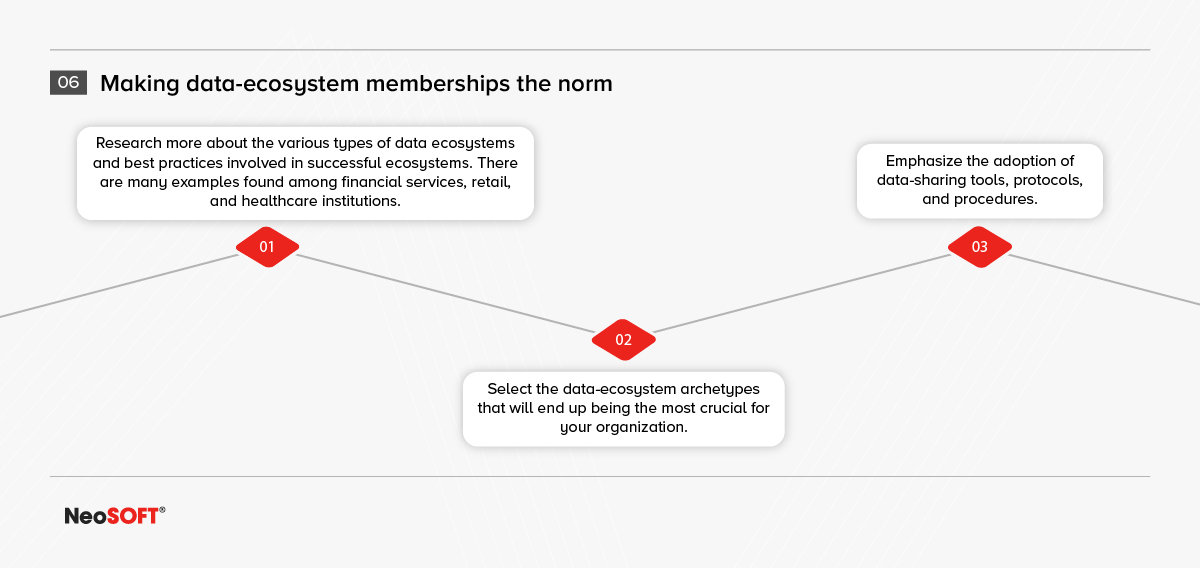
7. Prioritizing and automating data management for privacy, security, and resiliency
Data security and privacy are often regarded as compliance problems, occurring due to nascent regulatory data protection mandates and consumers starting to become aware of just how much of their information is collected and used. Data security and privacy protections are usually either insufficient or monolithic, instead of being customized to each data set. Giving employees secure data access is preceding manual process, making it error-prone and lengthy. Manual data-resiliency processes lead it difficulties in being able to recover data quickly and completely, running the risk of lengthy data outages that impact employee productivity.
Scenario by 2025
Organizational ideology has shifted completely to include data privacy, ethics, and security as areas of required competency, powered by evolving regulatory expectations like the General Data Protection Regulation (GDPR), greater awareness of customers about their data rights, and the growing liability of security incidents. Self-service provisioning portals handle and automate data provisioning using predetermined ‘scripts’ for securely and safely offering users access to data in almost real-time, significantly boosting user productivity.
Automated, perpetual backup procedures enforce data resiliency, quicker recovery procedures rapidly pinpoint and recover the ‘last good copy’ of data in minutes instead of days or weeks, hence decreasing the risks associated with technological glitches. AI tools are readily available for managing data effectively (for example, by automating the verification, correction, and remediation of data quality issues). When combined, these aspects allow organizations to instill greater trust in both the data and the way it is handled, ultimately boosting new data-powered services.
Use Cases
⦁ Retailers that have a presence online can specify the data collected from consumers and develop consumer portals to get consent from users and offer them the choice to ‘opt in’ to personalized services.
⦁ Healthcare and governmental institutions that have access to incredibly sensitive data can implement advanced data resiliency protocols that automatically create multiple daily backups and when required, identify the ‘last good copy; and restore it seamlessly.
⦁ Retail banks automatically provision credit-card data required to fast-track customer-facing applications, specifically during development or testing, to boost developer productivity and offer access to data more efficiently and securely than what is offered by traditional manual efforts today.
Key Enablers
⦁ Elevating the significance of data security across the organization.
⦁ Growing consumer awareness and active involvement in individual data protection rights.
⦁ The adoption of automated database-administration technologies for automated provisioning, processing, and information management.
⦁ The adoption of cloud-based data resiliency and storage tools enables automatic backup and restoration of data.
